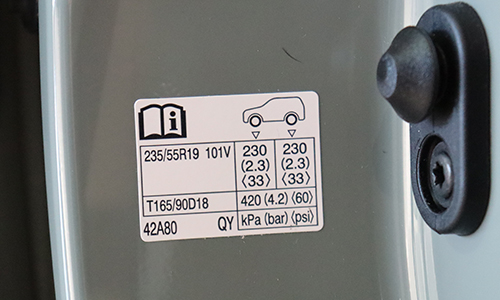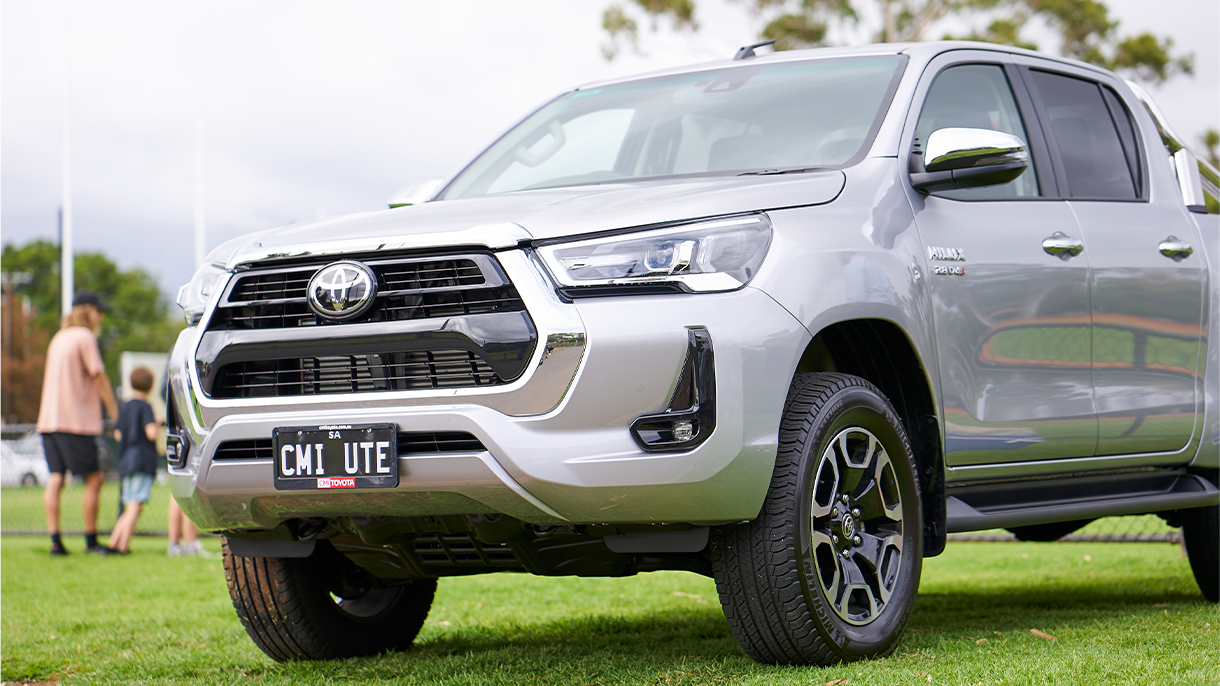Expert Advice: What PSI Should Car Tyres Be?
With so many makes, models, and sizes of cars out there, a common question is ‘what PSI should car tyres be?’ And it’s a good question because the answer will be different for every car.
Tyre pressure may seem like a small detail, compared to something like, say, engine maintenance or oil leaks – but having the right tyre pressure is crucial for a safe and comfortable ride.
But what exactly is the right pressure? And how do you know if your tyres are over or under inflated? Don't worry, we've got you covered. In this article, we'll break down everything you need to know about car tyre pressure and the ideal PSI for your vehicle.
So what should my PSI be?
Most passenger cars recommend maintaining tyre pressure between 32 psi and 35 psi when the tyres are cold. It's important to check tyre pressure when the tyres are cold because as they roll on the road, friction generates heat which increases the temperature and air pressure.
Later on in the article, we’ll get into detail about the specific ideal pressure for various makes and models of some of the most popular Toyotas in Australia.
Why does tyre pressure matter?
There's more to tyre pressure than just convenience and comfort. Here's why it matters:
- Safety. Properly inflated tyres provide better handling and grip, reducing the risk of accidents and keeping you safe.
- Fuel economy. Underinflated tyres increase rolling resistance, which means your engine has to work harder and use more fuel.
- Tyre life. Overinflated or underinflated tyres can wear out more quickly, which can cost you money in replacement tyres.
- Environmental impact. Overusing fuel has a negative impact on the environment, and underinflated tyres can lead to increased emissions.
So, while it may seem like a hassle, checking your tyre pressure regularly is an important part of keeping yourself, your car, your wallet, and the environment safe and healthy.
Finding the Recommended PSI for Your Car
Now that you understand the importance of maintaining the correct tyre pressure, it's time to find out what the recommended PSI is for your car. There are a few ways to do this:
- Check the owner's manual. The recommended tyre pressure for your car is typically listed in the owner's manual. If you don't have a copy of the manual, you can often find it online on the manufacturer's website. Alternatively, you can bring your car to a CMI Toyota Service Centre, where our tyre epxerts can help you find the recommended tyre pressure for your specific make and model.
- Check the door jamb or fuel filler cap. Another place to find the recommended tyre pressure is on a sticker located on the driver's side door jamb or fuel filler cap. This sticker will usually list the recommended PSI for both the front and rear tyres. If you can't find the sticker, bring your car to a CMI Toyota Service Centre and we can help you locate it.
- Check the tyre placard. The tyre placard is a sticker located in the glove compartment or on the inside of the fuel filler flap that lists the recommended tyre pressure. If you can't find the tyre placard, don't worry – our knowledgeable staff at CMI Toyota can help you locate it and provide you with the correct information.

Once you have determined the correct tyre pressure for your car, it's important to check the pressure regularly and make adjustments as necessary. And if you ever have any questions or concerns about your car's tyre pressure, don't hesitate to bring your car to one of our four CMI Toyota Service Centres, where we are always happy to help.
kPa to PSI Tyre Pressure Conversion
In some cases, you may come across a tyre pressure recommendation in kPa (kilopascals). kPa has historically been the standard unit of measurement used in Australia and other countries. However, PSI is becoming more common in Australia, especially with the popularity of digital gauges and air compressors that have both kPa and PSI options.
A lot of petrol stations also offer air compressors that show PSI readings. Therefore, it's important to know both units of measurement, especially if you're travelling internationally.
kPa to PSI tyre pressure calculator
If you need to convert kPa to PSI, the conversion is simple:
One kPa is roughly equal to 0.145 PSI.
So, if your recommended tire pressure is 220 kPa, you can convert it to approximately 32 PSI (220 x 0.145 = 31.9).
It's important to note that the conversion from kPa to PSI is not always exact, and there may be slight variations. It's always best to check your vehicle manual or speak with the knowledgeable CMI Toyota Tyre Team to ensure that you have the correct tyre pressure for your car.
At CMI Toyota Service Centres, we have experienced technicians and tyre experts who can help you with all of your tyre pressure needs, including kPa to PSI conversions. Our expert team can help you find the optimal tyre pressure for your specific vehicle, ensuring that your car is safe and performing at its best.
PSI tyre pressure chart by size
Here is the recommended tyre pressure for some of the most popular Toyota models in Australia.
Please note that the recommended tire pressure may vary depending on the year, model and variant of the vehicle, so it's always best to consult the owner's manual or a trusted CMI Toyota tyre expert to ensure you have the most accurate information for your specific vehicle.
| Car Size | Car Model | Car Type | Optimal Pressure (PSI) | Optimal Presure (kPa) |
| Small | 86 | Coupe | 35 | 240 |
| Yaris | Hatchback | 32-33 depending on the model year | 220-230 depending on the model year | |
| Prius | Hatchback | 31 | 210 | |
| C-HR | SUV | 33 | 230 | |
| Corolla | Sedan | 33-35 depending on the model year | 230-240 depending on the model year | |
| Medium | Camry | Sedan | 33-35 depending on the model year | 230-240 depending on the model year |
| RAV4 | SUV | 32 | 220 | |
| Kluger | SUV | 35 | 240 | |
| Large | LandCruiser | 4WD | 32-36 depending on the model year | 240-250 depending on the model year |
| LandCruiser Prado | 4WD | 29 | 200 | |
| HiLux | Pickup | 29-35 depending on the model year | 200-240 dpeending on the model year | |
| Fortuner | SUV | 29 | 200 | |
| HiAce | Van | 50-51 depending on the model year |
350 |
|
How to check and adjust your car's tyre pressure
We enjoy providing valuable advice, and that's why we've compiled a list of simple tips to help you maintain the correct tyre pressure.
First of all, a lot of newer cars come with automatic alerts if there's an issue with your tyre pressure.
If you don't have automatic alerts, you can always get a personal pressure valve to keep in your car. They're relatively cheap and easy to use - just attach it to your tyre valve and it will read out the pressure for you!
Either way, if you think you have an issue with your tyre pressure, and you’re confident you know what your ideal tyre pressure should be, the easiest thing to do is to take your car to your nearest petrol station. Most petrol stations have free all-in-one pressure gauges/air compressors that will take care of everything in just a few simple steps:
- Simply input the pressure you want into the air compressor’s interface (according to your car’s recommended PSI range, of course).
- Attach the air compressor nozzle to the valve on your tyre.
- The compressor will either add air if you need more, remove air if you need less, or do nothing if your tyre pressure is already correct. When the compressor beeps, you’ll know you’re good to go!
- Then repeat on all of your vehicle’s tyres.
It's quick, easy, and you usually don't have to pay a cent!
Remember, checking your tyre pressure should be done regularly, ideally once a fortnight, or at least once a month - and especially before long trips. If you’re not sure, stop in at one of CMI Toyota’s Service Centres and our Tyre Shop experts will be able to check your tyres for you and ensure they are in optimal condition.
Bottom line
Keeping your tyres properly inflated isn't just about staying safe on the road, it's also about taking care of your car and saving some extra cash in the process!
It's a small thing that can make a big difference in the long run, and it's easy enough to do regularly. So, take a few minutes every couple of weeks to check those tyres and keep them in tip-top shape.
And if you have any questions or concerns, don't hesitate to reach out to the Tyre Experts at one of our four CMI Toyota Service Centres in and around Adelaide. We're here to help you stay safe, save money, and get the most out of your vehicle.






